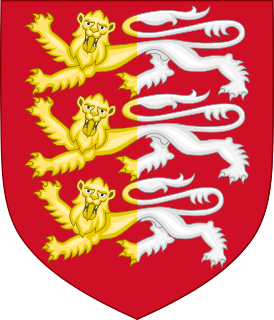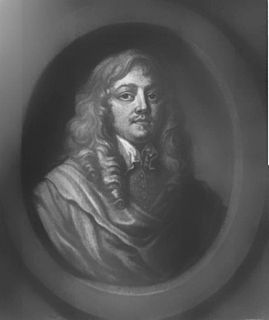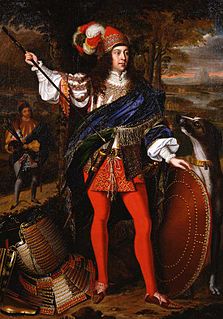Related Research Articles
Nineteen baronetcies have been created for persons with the surname Hamilton, eight in the Baronetage of Nova Scotia, one in the Baronetage of England, five in the Baronetage of Ireland, one in the Baronetage of Great Britain and four in the Baronetage of the United Kingdom. As of 2008 two creations are extant, two are dormant, two are either extinct or dormant and twelve extinct.
There have been three baronetcies created for persons with the surname Kinloch, two in the Baronetage of Nova Scotia and one in the Baronetage of the United Kingdom. Two of the creations are extant as of 2010.
There have been nine baronetcies created for persons with the surname Lloyd, three in the Baronetage of England, three in the Baronetage of Great Britain and three in the Baronetage of the United Kingdom. Two of the creations are extant as of 2010.
Sir Maurice Eustace, Baronet was an Irish gentleman, the only holder of the Eustace Baronetcy of Castle Martin in County Kildare, which was created for him in the Baronetage of Ireland on 23 December 1685.
There have been three baronetcies created for persons with the surname O'Neill, two in the Baronetage of Ireland and one in the Baronetage of the United Kingdom.
There have been four baronetcies created for persons with the surname FitzGerald, one in the Baronetage of Ireland and three in the Baronetage of the United Kingdom.
There have been three baronetcies created for persons with the surname Everard, one in the Baronetage of Ireland, one in the Baronetage of England and one in the Baronetage of the United Kingdom. Only one creation is extant as of 2010.
There have been three baronetcies created for persons with the surname Osborne, two in the baronetage of England and one in the baronetage of Ireland. Two creations are extant.
There have been two baronetcies created for the Pye family. Both are now extinct.

There have been three baronetcies created for members of the Dixwell family, all of whom are descended from Charles Dixwell of Coton House, near Churchover, Warwickshire. All three baronetcies are extinct.

Daniel O'Brien, 3rd Viscount Clare was an Irish Jacobite politician and soldier.
Sir Valentine Browne, 1st Viscount Kenmare and 3rd Baronet Browne of Molahiffe (1638–1694), was a Jacobite who fought for James II of England in the Williamite War in Ireland.
Sir Samuel Grimston, 3rd Baronet of Gorhambury House, Hertfordshire was an English politician.

The Curtius Baronetcy of Sweden was a title in the Baronetage of England, created on 2 April 1652 for William Curtius, "Resident to the King of Sweden".

Sir John Perceval, 1st Baronet was a substantial land owner in Ireland. He was knighted by Henry Cromwell for his services to the Commonwealth government of Ireland during the Interregnum. Shortly before the Restoration he held the offices of Chief Prothonotary of the Common Pleas and Clerk of the Crown. After the Restoration he was granted a baronetcy and given a full pardon for his activities during the Interregnum. He was appointed Privy Councillor to King Charles II, a Knight of the Shire for County Cork, and was a member of the Council of Trade.
Sir Henry Talbot was a seventeenth-century Irish landowner and brother-in-law of Tyrconnell.

Sir Neil O'Neill, 2nd Baronet of Shane's Castle, Killyleagh, County Antrim, was an Irish army officer.
Sir Redmond Everard, 4th Baronet was an Irish baronet and politician. He was the youngest son of Sir John Everard, 3rd Baronet, whose family effectively owned the town of Fethard in County Tipperary. Redmond himself was elected sovereign of Fethard in 1707 under its charter. His mother was the Hon. Eleanor Butler, eldest daughter of Thomas Cahir, 6th Baron Cahir and Elizabeth Matthew. His father was killed at the Battle of Aughrim in 1691 and his estates forfeited as a traitor. After his mother's death shortly afterwards he was brought up by his Protestant relatives, Lady Mary Butler and her husband, William Cavendish, 1st Duke of Devonshire, and conformed to the Protestant faith, although his family had been Roman Catholic for generations. Thanks to the Devonshire influence he was able to recover the lands forfeited on his father's death in 1691. In 1721 he married Mary Drake, only daughter of Montague Drake of Shardeloes, Buckinghamshire, and Jane Garrard, daughter of Sir John Garrard, 3rd Baronet. They had no children.
Sir Robert Pollock, 1st Baronet, of Pollok, was a British Army officer and Scottish politician who sat in the Parliament of Scotland from 1700 to 1707 and in the British House of Commons from 1707 to 1722.
Sir Patrick Trant, known as Sir Patrick Trant, 1st Baronet between 1686 and 1691, was an Anglo-Irish politician and Jacobite.
References
- ↑ Bernard Burke, Arthur Charles Fox-Davies, 'Dowdall Formerly of Mountttown' in A genealogical and heraldic history of the landed gentry of Ireland (Dalcassian Publishing Company, 1 Jan 1912), p.191 (Retrieved 2 November 2022).
- ↑ Text of the Act of Settlement 1662 in Ireland (Retrieved 2 November 2022).
- ↑ John D'Alton, Illustrations, Historical and Genealogical: Of King James's Irish Army List (1689) (1855), p.7 (Retrieved 2 November 2022).